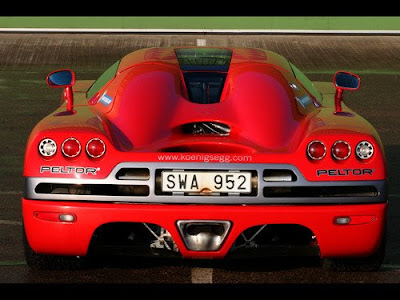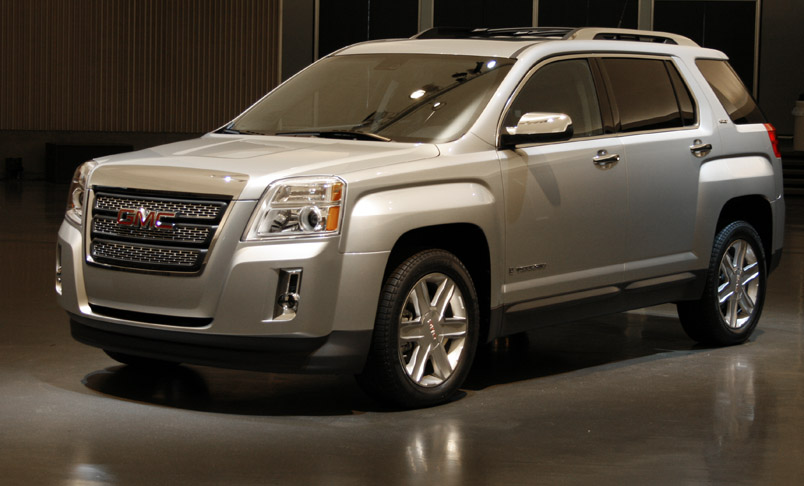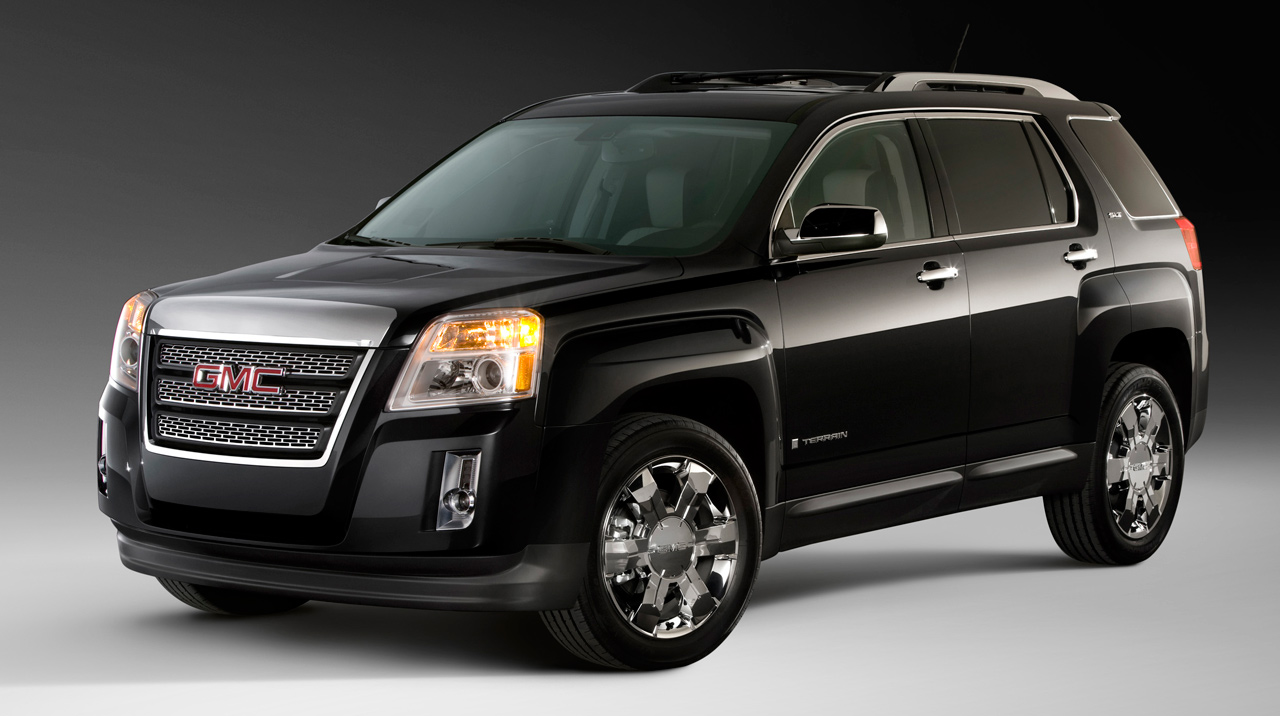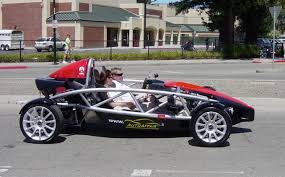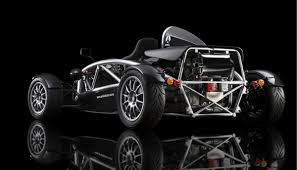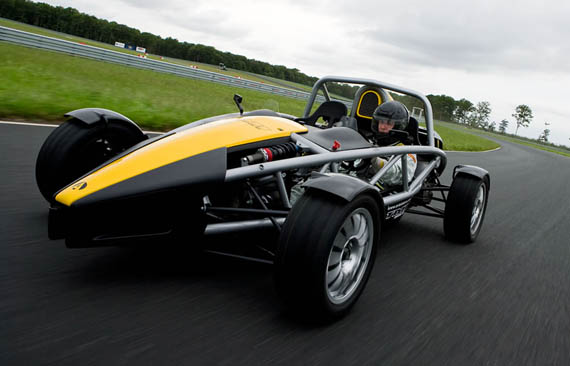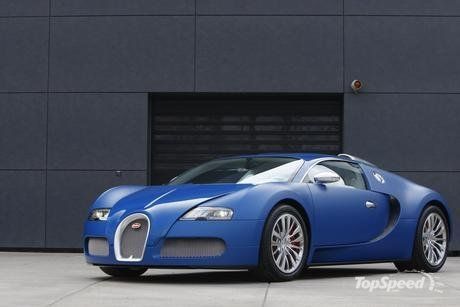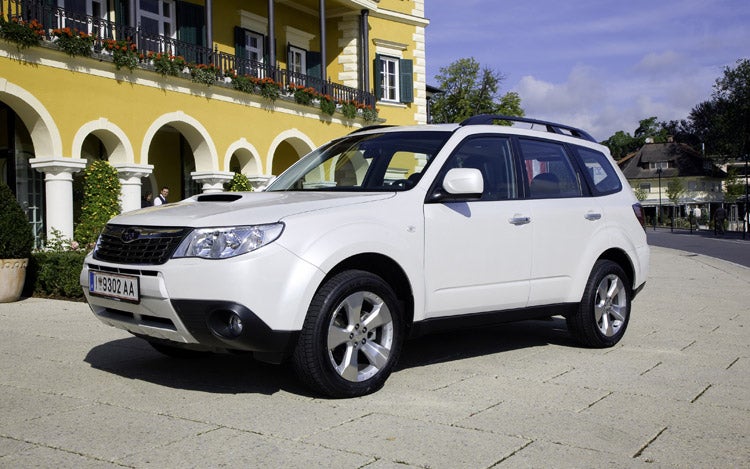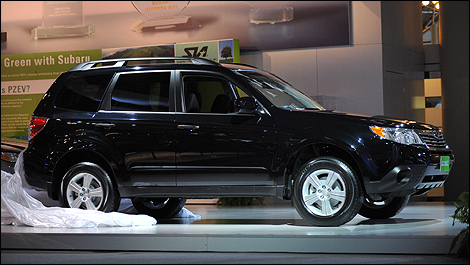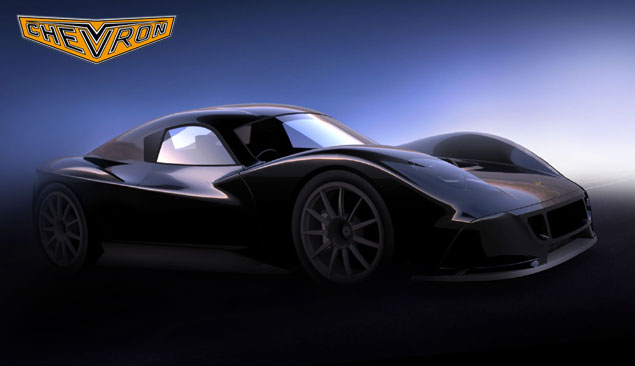




Lightweight, simple and striking with a distinctive engine and exhaust sound: every last detail of the Ferrari 430 Scuderia exudes uncompromising sportiness as a direct result of its close links to the world of racing, which is reflected in the car's name: "Scuderia". Seven-times World Champion Michael Schumacher was also involved in the car's development, with the result that the most advanced single-seater technology to Ferrari's sportiest and most passionate clients. With a dry weight of 2775 lb (1250 kg) and 510 hp delivered at 8500 rpm by its naturally aspirated 4308 cm3 V8 engine, the Ferrari 430 Scuderia boasts an extraordinarily low weight-power ratio of just 2.45 kg/hp, which allows it to sprint from 0 to 100 km/h in just 3.6 seconds. It can also complete a lap at Fiorano in a time comparable to that of the Ferrari Enzo, the Ferrari that has come to epitomise Maranello's philosophy of transferring F1 content to its road cars.
ENGINE AND ENGINE SOUND
The Ferrari 430 Scuderia's engine is an evolution of the Ferrari F430's 90° V8 which features a number of modifications to boost its specific power output from 114 hp/litre to 118 hp/litre. The inlet ducts and exhaust system have been optimised, most notably through the adoption of the exhaust geometries derived from the Ferrari F430 Challenge and the use of carbon-fibre on the intake manifold and for the filter housing to aid weight reduction.
Thanks to Ferrari's Formula 1 experience, the Ferrari 430 Scuderia's ignition system boasts special coils and, for the first time on a market-targeted car, a dedicated CPU capable of monitoring the ionising currents generated inside the combustion chamber between the spark plug electrodes. This means that every single sparking detonation is detected for every cylinder and sparking is faster and more accurate across the board.
The Ferrari 430 Scuderia's compression ratio has also been increased to 11.88:1, thanks in part to a new piston design.
Particular attention was paid to achieving just the right sound from the engine and exhaust as this has always been one of the real trademarks of every Prancing Horse car. Cutting-edge calculation tools were employed to optimise the Ferrari 430 Scuderia's intake and exhaust systems and sound damping, with the result that the exhaust and engine sound inside the cabin is clear, powerful and particularly thrilling in full acceleration.
F1-SUPERFAST2 GEARBOX
The F1-SuperFast2 is an evolution of the F1 gearbox used on all of Ferrari's models and reduces gear-shifting times to just 60 ms, the fastest time of any of the models in the Prancing Horse range, the lowest overall of any automated-manual gearbox. Significantly, Ferrari calculates the gear changing time according to the acceleration gap, not just the time it takes to engage the gear. The various stages are implemented in parallel (non-sequentially). In the case of the F1-SuperFast2, genuinely innovative integrated engine and gearbox management programmes allow the combined disengaging/engaging of the gears to take place partly in parallel with letting the clutch in and out.
E-DIFF2: E-DIFF WITH F1-TRAC
The E-Diff2 (which is integrated with the gearbox) is one of the primary components which clearly demonstrate the Ferrari 430 Scuderia's links to the track. In use for many years now in Formula 1, it is integrated with the car's stability control system.
The Ferrari 430 Scuderia is the first high performance road car after the F430 to sport an electronic differential. Torque is continuously distributed between the wheels via two sets of friction discs (one for each driveshaft) controlled by a hydraulic actuator.
The F1-Trac traction control system, which is derived from Ferrari's F1 experience, ensures that even more drivers will be able to extract the maximum performance from the car, thanks to the exceptional cornering, safety and stability it offers. Introduced for the first time on a road car with the Ferrari 599 GTB Fiorano, it is faster and more precise than a traditional traction control system and optimises traction by modulating power delivery to help maintain the desired vehicle trajectory. The system estimates the maximum available grip thanks to continual monitoring of the relative speed of the wheels.
The integrated E-Diff and F1-Trac systems offers 40% more acceleration out of corners than a traditional traction and stability control system.
RACING MANETTINO
The manettino has already featured in several of Ferrari's road cars but the Ferrari 430 Scuderia features the special Racing version which puts the emphasis firmly on track-specific sporty driving and provides the driver with even more choice in terms of the car set-up. With this in mind, the ICE setting available with the F430 has been removed and a new CT- (Traction Control Off) setting has been introduced. This deactivates the car's traction control, but unlike the CST position, retains the safety of the car's stability control system to ensure a level of safety is maintained.
Another novelty with the Ferrari 430 Scuderia is a button on the centre console which allows the suspension to be controlled separately from the predefined manettino strategy. This allows the driver can maintain maximum performance even on irregular road surfaces.
Michael Schumacher made a particularly valuable contribution to this area of the car's development. In fact. he and the car development team worked together to ensure that the Ferrari 430 Scuderia delivers both exceptional performance and fantastic driving pleasure which is within reach of non-professional drivers.
BRAKES
The Ferrari 430 Scuderia boasts a specific braking system featuring CCM (carbon ceramic material) discs with specific dimensions to cope with the car's increased performance.
The front discs are now 18 mm larger than those on the F430 and are designed to dissipate the extra heat created by the higher performance and are even more hard-wearing for greater efficiency. These components, together with 6-pot calipers, guarantee blistering performance at all times and, equally importantly, consistently efficient braking during prolonged track use.
AERODYNAMICS
The Ferrari 430 Scuderia's external styling has been honed to improve its aerodynamic efficiency by increasing overall downforce whilst still retaining the same drag values as the Ferrari F430. The aerodynamic efficiency of the newly-styled rear diffuser has been enhanced by the addition of a revised profile for spoiler at the rear of the engine cover and by the large venturis that run from the front wheel houses to the rear bumpers, achieving the patented "Base Bleed" effect developed by Ferrari as part of the Ferrari FXX project. The Base Bleed effect has the double advantage of reducing the pressure in the rear wheel arch, thereby increasing downforce and lowering drag by blowing the car's "wake".
STYLING AND PERSONALISATION
The Ferrari 430 Scuderia's ultra-sporty character and blistering performance have led to the redesign of many of its exterior and interior styling features. This was done to give the F430-inspired model its own strong personality and to further enhance the aerodynamics of what is a very extreme car. The modifications made to the exterior focus on increasing downforce. In-depth research went into reducing the car's weight and has led to extensive use of carbon-fibre, including some of the bodywork components.
The cabin has been inspired by racing and, once again, the emphasis has been on weight reduction and using technical materials where possible.
Ferrari 430 Scuderia Technical Specifications
* Vehicle dimensions
o Overall length: 177.6 in (4512 mm)
o Overall width: 75.7 in (1923 mm)
o Height: 47.2 in (1199 mm)
o Wheelbase: 102.4 in (2600 mm)
o Front track: 65.7 in (1669 mm)
o Rear track: 63.6 in (1616 mm)
o Dry Weight: 2775 lb (1250 kg)
o Kerb Weight: 2975 lb (1350 kg)
o Weight Distribution: 43% Front, 57% Rear
o Boot capacity: 8.83 cu ft (250 l)
o Fuel tank capacity: 25.1 US gal (20.9 UK gal) (95 l)
o Brakes: Carbon-ceramic; Front 15.6 x 1.4 in (398 X 36 mm), Rear 13.7 x 1.3 in (350 X 34 mm)
o Tyres: Front 235/35 19", Rear 285/35 19"
* Engine
o Type: 90° V8
o Bore and Stroke: 3.26 x 3.19 in (92 x 81 mm)
o Total displacement: 263 cu in (4308 cm3)
o Compression ratio: 11.88:1
o Maximum power: 375.4 kW (510 CV) @ 8500 rpm
o Specific output: 118.4 CV/litre
o Maximum torque: 470 Nm (346.67 lb ft) @ 5250 rpm
o Maximum rpm: 8640 rpm (with limiter)
* Performance
o Acceleration
+ 0-62 mph (0-100 km/h): under 3.6 s
+ 0-124 mph (0-200 km/h): under 11.6 s
+ 0 - 1000 m: 20.9 s
o Top Speed: 198 mph (320 km/h)
o Dry weight/Power: 5.4 lb/CV (2,45 kg/CV)
* Electronic Controls
o CST Stability and Traction Control with new traction control logic F1-Trac integrated with the electronic differential (E-Diff)
* Transmission and Gearbox
o Electronic differential: E-Diff2 (E-Diff + F1-Trac)
o Gearbox: F1, 6-gears + Reverse
* Fuel Consumption
o Combined: 15.7 l/100 km
* CO2 Emissions
o Combined: 360 g/km
ENGINE AND ENGINE SOUND
The Ferrari 430 Scuderia's engine is an evolution of the Ferrari F430's 90° V8 which features a number of modifications to boost its specific power output from 114 hp/litre to 118 hp/litre. The inlet ducts and exhaust system have been optimised, most notably through the adoption of the exhaust geometries derived from the Ferrari F430 Challenge and the use of carbon-fibre on the intake manifold and for the filter housing to aid weight reduction.
Thanks to Ferrari's Formula 1 experience, the Ferrari 430 Scuderia's ignition system boasts special coils and, for the first time on a market-targeted car, a dedicated CPU capable of monitoring the ionising currents generated inside the combustion chamber between the spark plug electrodes. This means that every single sparking detonation is detected for every cylinder and sparking is faster and more accurate across the board.
The Ferrari 430 Scuderia's compression ratio has also been increased to 11.88:1, thanks in part to a new piston design.
Particular attention was paid to achieving just the right sound from the engine and exhaust as this has always been one of the real trademarks of every Prancing Horse car. Cutting-edge calculation tools were employed to optimise the Ferrari 430 Scuderia's intake and exhaust systems and sound damping, with the result that the exhaust and engine sound inside the cabin is clear, powerful and particularly thrilling in full acceleration.
F1-SUPERFAST2 GEARBOX
The F1-SuperFast2 is an evolution of the F1 gearbox used on all of Ferrari's models and reduces gear-shifting times to just 60 ms, the fastest time of any of the models in the Prancing Horse range, the lowest overall of any automated-manual gearbox. Significantly, Ferrari calculates the gear changing time according to the acceleration gap, not just the time it takes to engage the gear. The various stages are implemented in parallel (non-sequentially). In the case of the F1-SuperFast2, genuinely innovative integrated engine and gearbox management programmes allow the combined disengaging/engaging of the gears to take place partly in parallel with letting the clutch in and out.
E-DIFF2: E-DIFF WITH F1-TRAC
The E-Diff2 (which is integrated with the gearbox) is one of the primary components which clearly demonstrate the Ferrari 430 Scuderia's links to the track. In use for many years now in Formula 1, it is integrated with the car's stability control system.
The Ferrari 430 Scuderia is the first high performance road car after the F430 to sport an electronic differential. Torque is continuously distributed between the wheels via two sets of friction discs (one for each driveshaft) controlled by a hydraulic actuator.
The F1-Trac traction control system, which is derived from Ferrari's F1 experience, ensures that even more drivers will be able to extract the maximum performance from the car, thanks to the exceptional cornering, safety and stability it offers. Introduced for the first time on a road car with the Ferrari 599 GTB Fiorano, it is faster and more precise than a traditional traction control system and optimises traction by modulating power delivery to help maintain the desired vehicle trajectory. The system estimates the maximum available grip thanks to continual monitoring of the relative speed of the wheels.
The integrated E-Diff and F1-Trac systems offers 40% more acceleration out of corners than a traditional traction and stability control system.
RACING MANETTINO
The manettino has already featured in several of Ferrari's road cars but the Ferrari 430 Scuderia features the special Racing version which puts the emphasis firmly on track-specific sporty driving and provides the driver with even more choice in terms of the car set-up. With this in mind, the ICE setting available with the F430 has been removed and a new CT- (Traction Control Off) setting has been introduced. This deactivates the car's traction control, but unlike the CST position, retains the safety of the car's stability control system to ensure a level of safety is maintained.
Another novelty with the Ferrari 430 Scuderia is a button on the centre console which allows the suspension to be controlled separately from the predefined manettino strategy. This allows the driver can maintain maximum performance even on irregular road surfaces.
Michael Schumacher made a particularly valuable contribution to this area of the car's development. In fact. he and the car development team worked together to ensure that the Ferrari 430 Scuderia delivers both exceptional performance and fantastic driving pleasure which is within reach of non-professional drivers.
BRAKES
The Ferrari 430 Scuderia boasts a specific braking system featuring CCM (carbon ceramic material) discs with specific dimensions to cope with the car's increased performance.
The front discs are now 18 mm larger than those on the F430 and are designed to dissipate the extra heat created by the higher performance and are even more hard-wearing for greater efficiency. These components, together with 6-pot calipers, guarantee blistering performance at all times and, equally importantly, consistently efficient braking during prolonged track use.
AERODYNAMICS
The Ferrari 430 Scuderia's external styling has been honed to improve its aerodynamic efficiency by increasing overall downforce whilst still retaining the same drag values as the Ferrari F430. The aerodynamic efficiency of the newly-styled rear diffuser has been enhanced by the addition of a revised profile for spoiler at the rear of the engine cover and by the large venturis that run from the front wheel houses to the rear bumpers, achieving the patented "Base Bleed" effect developed by Ferrari as part of the Ferrari FXX project. The Base Bleed effect has the double advantage of reducing the pressure in the rear wheel arch, thereby increasing downforce and lowering drag by blowing the car's "wake".
STYLING AND PERSONALISATION
The Ferrari 430 Scuderia's ultra-sporty character and blistering performance have led to the redesign of many of its exterior and interior styling features. This was done to give the F430-inspired model its own strong personality and to further enhance the aerodynamics of what is a very extreme car. The modifications made to the exterior focus on increasing downforce. In-depth research went into reducing the car's weight and has led to extensive use of carbon-fibre, including some of the bodywork components.
The cabin has been inspired by racing and, once again, the emphasis has been on weight reduction and using technical materials where possible.
Ferrari 430 Scuderia Technical Specifications
* Vehicle dimensions
o Overall length: 177.6 in (4512 mm)
o Overall width: 75.7 in (1923 mm)
o Height: 47.2 in (1199 mm)
o Wheelbase: 102.4 in (2600 mm)
o Front track: 65.7 in (1669 mm)
o Rear track: 63.6 in (1616 mm)
o Dry Weight: 2775 lb (1250 kg)
o Kerb Weight: 2975 lb (1350 kg)
o Weight Distribution: 43% Front, 57% Rear
o Boot capacity: 8.83 cu ft (250 l)
o Fuel tank capacity: 25.1 US gal (20.9 UK gal) (95 l)
o Brakes: Carbon-ceramic; Front 15.6 x 1.4 in (398 X 36 mm), Rear 13.7 x 1.3 in (350 X 34 mm)
o Tyres: Front 235/35 19", Rear 285/35 19"
* Engine
o Type: 90° V8
o Bore and Stroke: 3.26 x 3.19 in (92 x 81 mm)
o Total displacement: 263 cu in (4308 cm3)
o Compression ratio: 11.88:1
o Maximum power: 375.4 kW (510 CV) @ 8500 rpm
o Specific output: 118.4 CV/litre
o Maximum torque: 470 Nm (346.67 lb ft) @ 5250 rpm
o Maximum rpm: 8640 rpm (with limiter)
* Performance
o Acceleration
+ 0-62 mph (0-100 km/h): under 3.6 s
+ 0-124 mph (0-200 km/h): under 11.6 s
+ 0 - 1000 m: 20.9 s
o Top Speed: 198 mph (320 km/h)
o Dry weight/Power: 5.4 lb/CV (2,45 kg/CV)
* Electronic Controls
o CST Stability and Traction Control with new traction control logic F1-Trac integrated with the electronic differential (E-Diff)
* Transmission and Gearbox
o Electronic differential: E-Diff2 (E-Diff + F1-Trac)
o Gearbox: F1, 6-gears + Reverse
* Fuel Consumption
o Combined: 15.7 l/100 km
* CO2 Emissions
o Combined: 360 g/km


